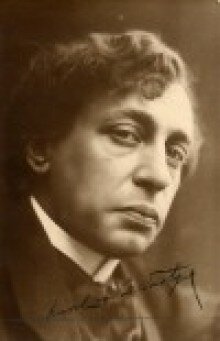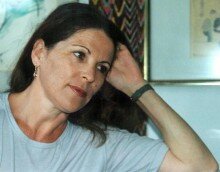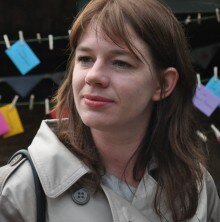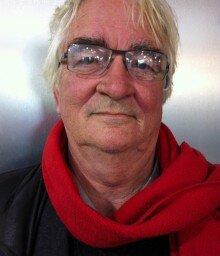
Karel van de Woestijne is perhaps the most important post-symbolist poet to have written in the Dutch language. While he was profoundly influenced by the French symbolism of the latter quarter of the nineteenth century, he also formed part of the international reaction against symbolism. His early poetry has much in common with the inclination to the everyday and to nature inspired by André Gide and Francis Jammes. Later, after World War One, his work connects with the late, modernist lyricism of Yeats and Rilke. He remained one of the most influential poets in Flanders and the Netherlands until shortly after the Second World War.
Van de Woestijne seemed destined to become a French language poet in line with his fellow Ghent residents, Charles Van Lerberghe and Maurice Maeterlinck. The fact that this did not happen is due to his father (who had worked hard to attain his place among the bourgeoisie) and the latter’s decision not to send him to the Jesuit College, which was attended by the sons of the authentic bourgeoisie. His school days at the state-run Athenaeum gave him the opportunity to establish contacts with a more Flemish minded environment.
In his early years, Van de Woestijne came into contact with two avant-garde journals of the time, De Nieuwe Gids (The New Guide, 1885-1943) in the Netherlands and Van Nu en Straks (Of Now and Later, 1893-1901) in Flanders. He was closer to Van Nu en Straks, which added a concern for the life and cultural elevation of poor, underdeveloped Flanders to the individualism of De Nieuwe Gids. He was a member of the journal’s editorial board and that of its successor Vlaanderen (Flanders, 1903-1907), of which he became the secretary in 1906.
In spite of the fact that Van de Woestijne did not complete his secondary education, he nevertheless became a professor at the University of Ghent in the 1920’s. Prior to this, however, his life was characterised by a consistent lack of financial means. His marriage in 1904 and the arrival of a first child made the need to provide for his family all the more pressing. In 1906, he became Brussels correspondent for the Nieuwe Rotterdamsche Courant (New Rotterdam Newspaper) and he combined this function with a job as a minor civil servant. Fifteen volumes of critical journalistic work for the NRC constitute a gold mine for historians in general and historians of culture in particular.
Van de Woestijne’s collected work consists of almost one thousand pages of poetry and an equal amount of prose, a significant portion being dedicated to epic poetry and essays on the visual arts and literature. In addition, he published a sizeable novel entitled De leemen torens (Towers of Clay), which he wrote during the First World War together with Herman Teirlinck. The novel and the book of essays contain pages alluding to “Ghent’s curse”, the sombre, ill-tempered character of its inhabitants, which was to find its counterpart in the canals, factories and working class districts of the city. By contrast, the idyllic village of Latem, where he lived from 1900 to 1904 and again from April 1905 to October 1906 was something of a liberation. Large portions of the collections De boom-gaard der vogelen en der vruchten (The Orchard of Birds and Fruit) and De gulden schaduw (The Golden Shadow) stem from this period of his life. Perhaps the best know result of his time in Latem is the Laethemsche brieven over de Lente aan Adolf Herckenrath (Laethem Letters about Spring to Adolf Herckenrath), prose poems with the “arid love” for his future wife Mariette van Hende as their background.
Van de Woestijne was a precocious artist, who was capable of rapidly absorbing influences of every kind, from the French Parnassians to Paul Verlaine and Emile Verhaeren. His debut collection Het vader-huis (My Father’s House) is often characterised as sentimental or atmospheric lyricism. Like the early poems of Rilke, the main concern is with musicality and atmosphere. Around 1900, he was strongly influenced by poets such as Francis Jammes, Henri de Régnier, Paul Fort and Albert Samain. It was only during a later period in his writing that his poems were to shift in the direction of the work of Baudelaire, the nineteenth-century poet with whom Van de Woestijne is most compared.
Catholic critics have tended to focus on the spirit/senses dualism in his work, a feature he is said to have shared with Baudelaire. The theme in question was first given expression in the collection De modderen man (The Mud-Man) – taken to be the starting point of the trilogy Wiekslag om de kim (Wing-stroke around the Horizon) – published after World War One but written for the most part prior to the war. It is claimed that the collection employs the female figure to represent the fleshly element. Described as decadent, this subject matter was to be further reinforced by tiredness and weakness, narcissism and suicidal tendencies. In spite of this, a vitalist tendency also runs through his work, and the duality between consciousness and nature would appear to characterise his writings more than the problem of body and spirit.
The First World War had a profound effect on Van de Woestijne’s life. From the political perspective he chose the correct side – those who refused to collaborate with the Germans – and this position was to be decisive for his post-war career. The war brought about a major transformation in the world of his poetry. Deprivation and, in particular, lack of liberty stimulated a longing for God and a sense of introspection. Van de Woestijne’s spiritual inclinations, which had been smouldering prior to the war, became more intense. Asceticism and the need to suffer gave his new lyricism a new and more robust mystical slant. This tendency is evident in collections such as God aan zee (God at the Seaside), Het berg-meer (The Mountain Lake) and a portion of the transitional collection Het zatte hart (The Weary Heart). The collection Substrata, “miniature poems”, which employs a different kind of imagery, with metaphors that do not appear to refer to reality but stem rather from a variety of different semantic fields, clearly prepared the way in this regard.
The first signs of Van de Woestijne’s mystical tendency are to be found in prose texts. After a collection of for the most part highly imaginative stories (Janus met het dubbele voorhoofd (Janus with the Double Forehead, 1908), he found unique material – before and during the war – in the lives of saints and in the Bible (Goddelijke verbeeldingen (Divine Imaginations) and De bestendige aanwezigheid (The Enduring Presence)). This he transmuted into a virtuoso descriptive art with a moralising or spiritual tendency. The inclination to moralise, which remained one of the author’s most distinguishing features, was given reinforced expression after the war in what was to become perhaps his most characteristic prose collection: Beginselen der Chemie (The Principles of Chemistry).
Van de Woestijne’s virtuosity is most evident in his epic poems, which were published in three volumes (Interludiën I (Interludes I) and Interludiën II (Interludes II), Zon in den Rug (The Sun at the Back)). The poems in question rework classical mythology, replete with elaborate Homeric comparisons, a technique in which his translation of the Iliad had made him an expert.
Selected bibliography
Poetry
Het vader-huis (My Father’s House), 1903
De boom-gaard der vogelen en der vruchten (The Orchard of Birds and Fruit), 1905
De gulden schaduw (The Golden Shadow), 1910
Interludiën I (Interludes I), 1912
Interludiën II (Interludes II), 1914
De modderen man (The Mud-Man), 1920
Zon in den rug (The Sun at the Back), 1924
Substrata, 1924
Het zatte hart (The Weary Heart), 1926
God aan zee (God at the Seaside), 1926
Het berg-meer (The Mountain Lake), 1928
Nagelaten gedichten (Posthumous poems), 1942
The collected poems of Karel van de Woestijne are published by Lannoo in 2007.
Prose
Laethemsche brieven over de lente (Laethem Letters about Spring, 1901), in Verzameld werk III, Manteau, Brussels, 1948
Janus met het dubbele voorhoofd (Janus with the Double Forehead,1908), in Verzameld werk III, Manteau, Brussels, 1948
Afwijkingen (Deviations, 1910) in Verzameld werk III, Manteau, Brussels, 1948
De bestendige aanwezigheid (The Enduring Presence, 1918) in Verzameld werk III, Manteau, Brussels, 1948
Goddelijke verbeeldingen (Divine Imaginations, 1918) in Verzameld werk III, Manteau, Brussels, 1948
Beginselen der chemie (The Principles of Chemistry, 1925) in Verzameld werk III, Manteau, Brussels, 1948
De leemen torens [in co-operation with Herman Teirlinck] (Towers of Clay, 1928) in Verzameld werk III, Manteau, Brussels, 1948
Brieven aan Lode Ontrop (Letters to Lode Ontrop), Koninklijke Academie van Nederlandse Taal- en Letterkunde, Gent, 1985
Verzameld journalistiek werk (Collected Journalistic Works), Cultureel Documentatiecentrum, Gent, 1986-95
“Altijd maar bijeenblijven”. Brieven aan C.A.J. van Dishoeck, 1903-1929 (“Just Always Staying Together”. Letters to C.A.J. van Dishoeck, 1903-1929), AchterhetBoek, ‘s-Gravenhage, 1997
Translations
Poetry
Einsame Brände (German), Eugen Diederichs Verlag, Düsseldorf, 1952
L’Ombre dorée et autres poèmes (French), Orphée/La Différence, Paris, 1993
I Cavalli di Diomede (Italian), Ariele, Milano, 1995
Links
Information about Karel Van de Woestijne in the Digital Library of Dutch Literature (in Dutch).
An alternative selection of the poetry of Van de Woestijne as published by the Flemish literary revue De Brakke Hond (in Dutch).







